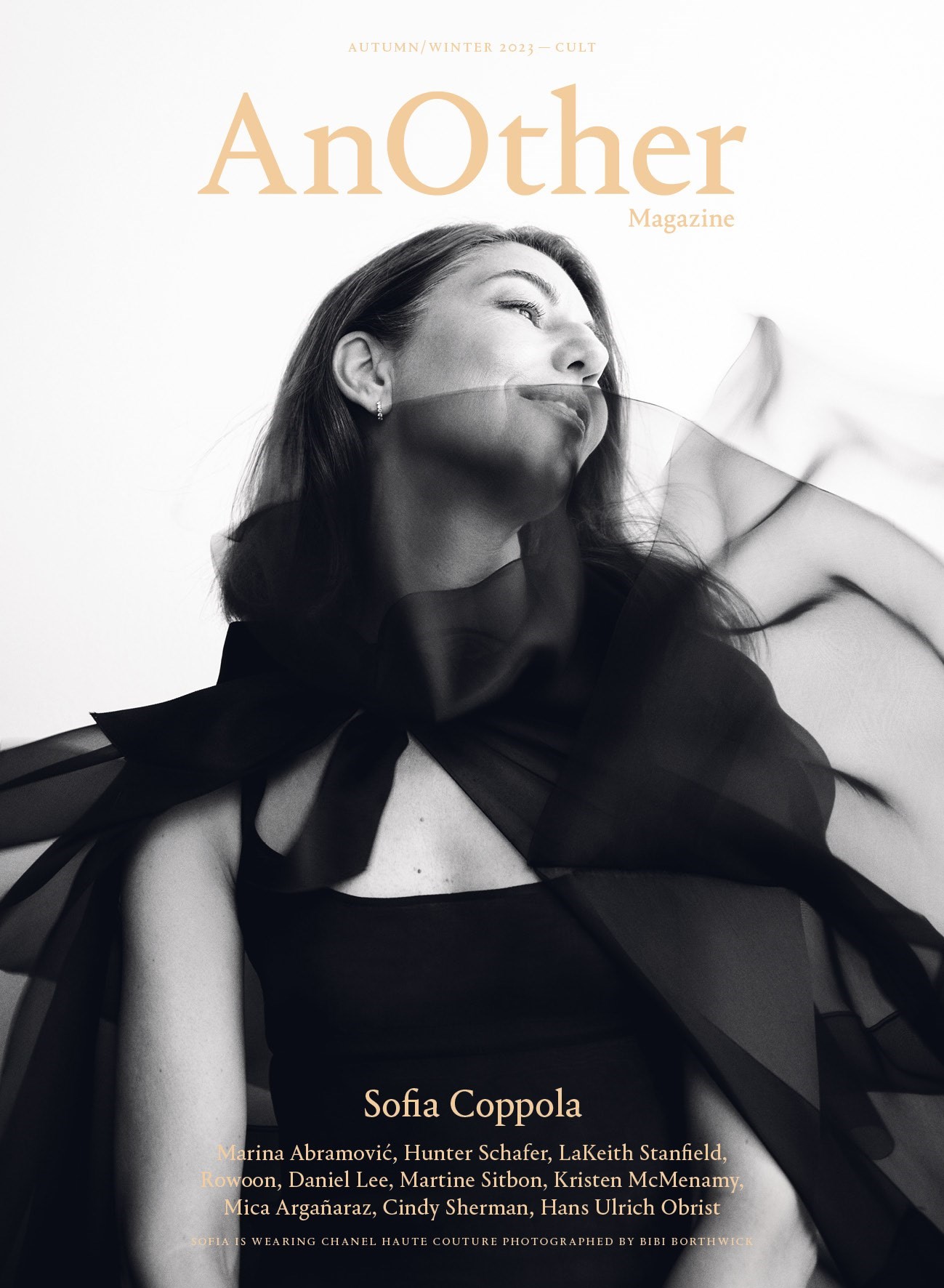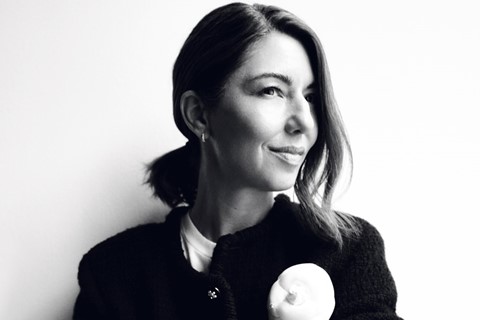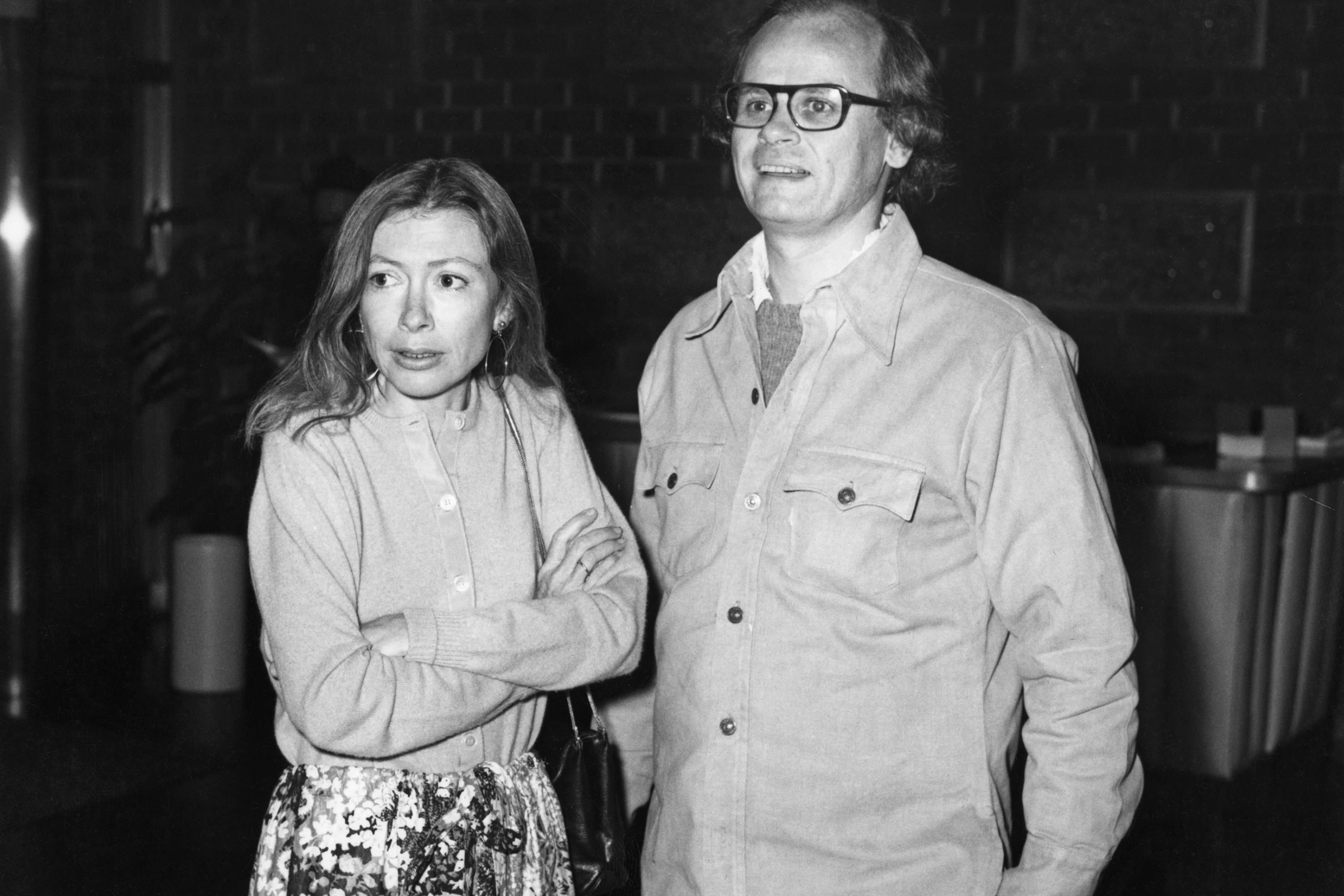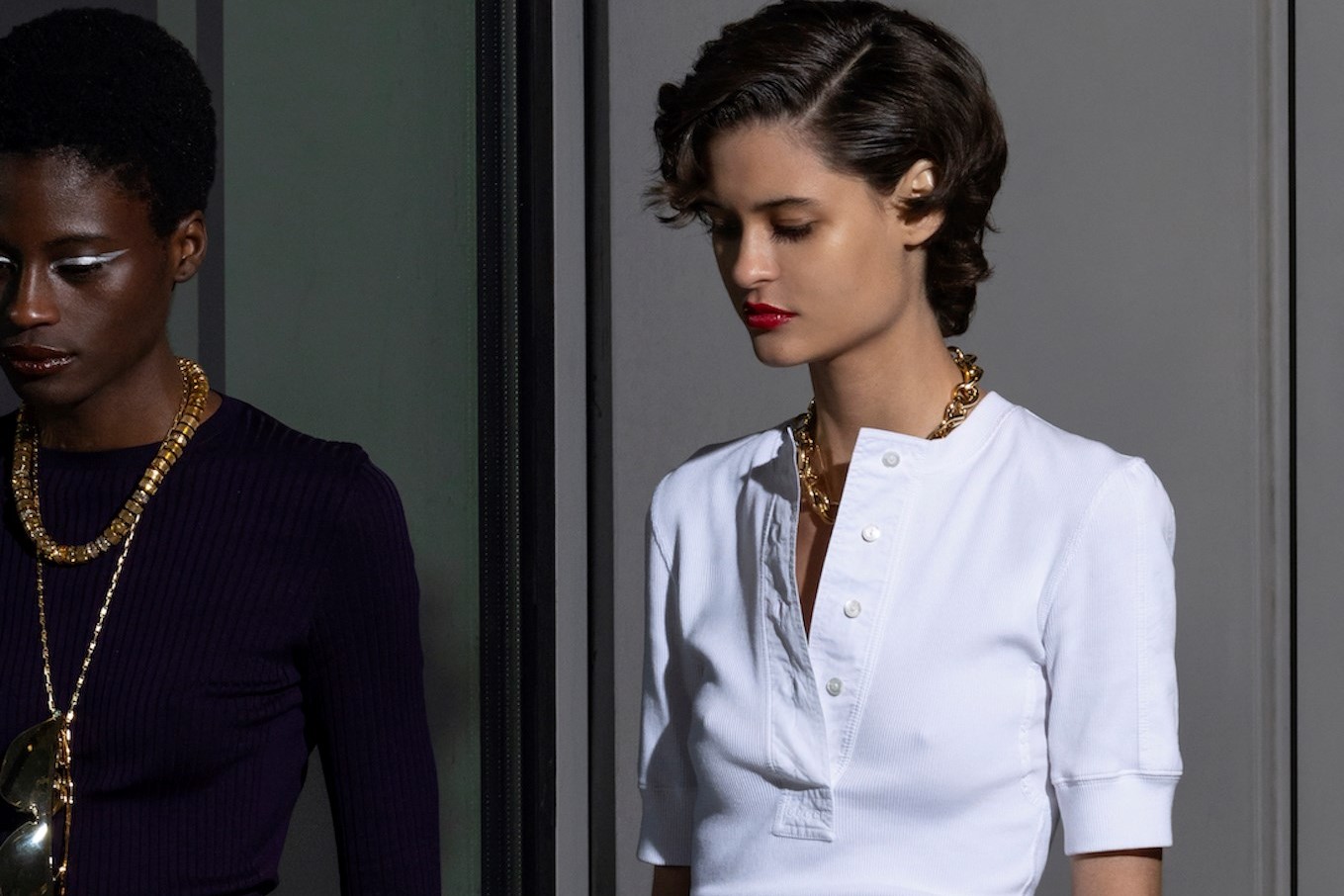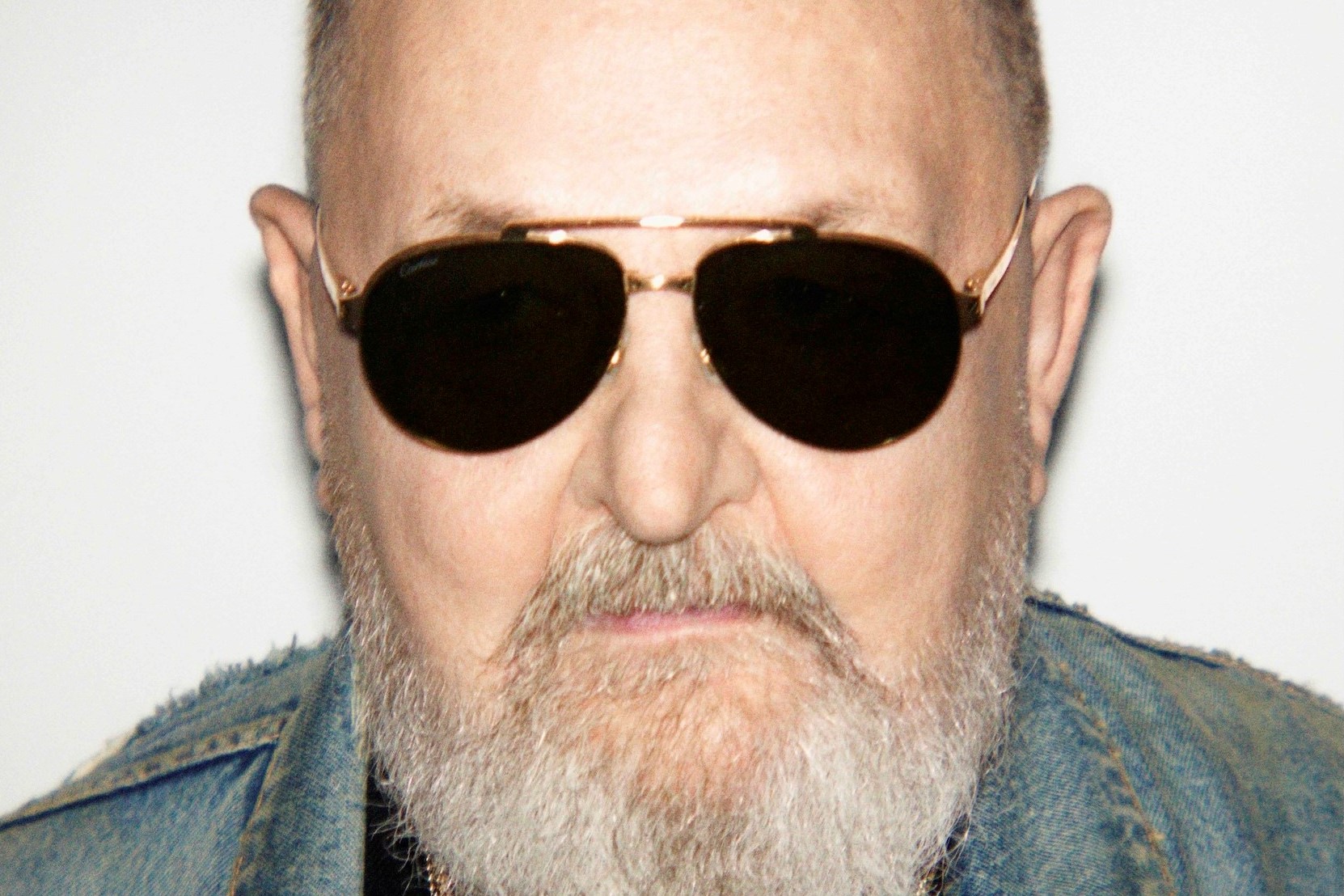This article is taken from the Autumn/Winter 2023 issue of AnOther Magazine:
From The Virgin Suicides’ clan of sisters suffocating in Seventies suburbia to The Bling Ring’s underparented teens on a celebrity-burgling spree, Sofia Coppola conjures the rich texture of girlhood caught in flux like no one else. Her newest subject feels like a cosmic match: Priscilla Presley, the beehived bride of the king of rock and roll. She met Elvis as a 14-year-old schoolgirl and was secreted behind the gates of Graceland when she was still doing homework. Based on Presley’s memoir, Coppola’s film Priscilla promises the lush palette of 1960s, Cadillac-and-milkshake America with the complicated, hothouse atmosphere of those in-between moments of adolescence the director handles so masterfully. With her impeccable family pedigree, Francis Ford’s daughter has long been in her element telling stories on set; now 52, she’s one of the most distinctive filmmakers of her generation.
The monumentally influential artist Cindy Sherman tells stories too, equally ambiguous and unsettling ones, plotting eerily familiar scenarios in which she places herself as the medium to dismantle the archetypes around us. Since her breakthrough in the early Eighties, she has freeze-framed small-town housewives and leathery socialites, Hitchcock blondes and Renaissance Madonnas, crime-scene corpses and nightmarish clowns. Her latest digital series reconstructs the features of her face, reflecting back our fractured modern selves in contorted snarls and toothy grimaces. Not unlike a Coppola heroine, Sherman grew up the youngest of five children in suburban Long Island, watching B-movies and playing dress-up in her bedroom. Weaving her deeply uncanny scenes via make-up, wigs and thrift-store finds, the artist is a one-woman crew, wielding camera, lights, costumes and props.
Some of those dot the shelves behind her on the day she and Coppola meet over Zoom – Coppola at home in downtown New York, Sherman at her studio in Long Island.
Cindy Sherman: I loved Priscilla. The costuming, the settings, the period. It was just fantastic to watch.
Sofia Coppola: Thank you. That’s so nice to hear. It was fun to get into that world. We were shooting in this warehouse studio where we had our costume department and our sets all in one place. I could go and watch them building the gates of Graceland.
CS: So it wasn’t shot in Graceland, then?
SC: No. It’s changed a lot – they have themed hotels there and stuff. They like to control all the content made around it so I don’t think they’d be open to interpretation. We built it all in Toronto. It was low budget, and if it hadn’t been for an amazing art department we wouldn’t have been able to do it. Tamara [Deverell], who designed it, was like, “We’ll shoot the hospital scene in this corner and then we’ll redress it as the baby’s nursery.” On the stage she built the Graceland interiors from the real plans of Graceland, so it’s all proportionally the same.
CS: Priscilla herself was part of the project, right? Did she come to set and was she like, “Wow, this is so exactly my home”?
SC: She never came when we were shooting, but I showed her the movie after we cut it together. I was so nervous to show it to her, and she said, “That was my life.” She said, “You really did your homework,” which made me relieved because there are no pictures of Elvis’s bedroom, so we had to invent our idea of what Sixties Elvis’s bedroom would be like. He was really into these animal figurines, these sculptures of big dogs, and in Priscilla’s memoir she talks about his bed being really big and tall and intimidating. So her book helped us imagine how it looked.
CS: Priscilla’s story is unbelievable. She was so young when Elvis picked her out – and they slept together but they didn’t actually have sex for many years, until they were married.
SC: I know, in her book she goes into all these details that are so revealing. They’re kind of alone in their little cave, which sounds romantic, but I don’t know what was going on exactly. In her book she talks about how they took Polaroids of each other and dressed up in costumes. Can you imagine that box of Polaroids? I think they were destroyed. I didn’t want to be impolite and pry too much, but because we were shooting that scene, I asked, “What kind of costumes did you dress up in? Like, if I have to pick the costumes, what would they be?” And she kind of paused and reluctantly said, “Well, his secretary.” And I was like, “Oh, OK!” Her being a teenager and living at Graceland but going to high school during the day – that to me is wild.
CS: And she couldn’t have any friends.
SC: It seems hard that they said you can’t have friends. Imagine being the new kid at school, but she’s Elvis’s girlfriend, living at Graceland with all these guys. I asked her if she was friends with the wives of the mafia guys, and she said it was hard because she knew what all the guys were up to – she was the only girl invited when they would go out and party. She couldn’t really be honest about what was going on, and that put her in a hard position with the wives. I asked her what she was doing all that time when she was stuck at home – because he was off doing his movies and Priscilla was supposed to stay home. I was trying to imagine what she would do all day.
“I was so nervous to show [the film] to [Priscilla], and she said, ’That was my life.’ She said, ’You really did your homework’” – Sofia Coppola
CS: What did she say?
SC: She told me she went to etiquette class to learn these ladylike things. I imagined her getting her hair done and looking at magazines and all the maintenance of being this ideal woman of that time.
CS: Did you have the idea to do Priscilla for a while?
SC: I had read the book a long time ago and it stayed in my mind because that world is so visual. But then I thought, is it too much like Marie Antoinette? During the pandemic I was adapting an Edith Wharton book, The Custom of the Country, which is written in five parts, so a long and expensive period piece that was hard to get the financing for. I worked on it for two years and finally thought, I’m going to switch gears. I reread Priscilla’s book and it really appealed to me to jump into her world – it felt contained. I like the super-Americana thing of Memphis in the Sixties. It felt exotic because it wasn’t anything I grew up knowing about. My parents weren’t into Elvis because they’re more European. The hair and make-up and her transformation into that glamorous character, how she became Priscilla, was so interesting, and there are so many photos and references to look at. Also, I have teenage daughters – my older daughter is 16. To be the mother of a 16-year-old while I’m reading about Priscilla rebelling and wanting to go and live with Elvis, and feeling for the parents – it was a unique moment to be thinking about both sides of that.
CS: Were you already working on it when Lisa Marie died? There’s that scene when Priscilla has the baby …
SC: That was heartbreaking. We were editing at that point and it was shocking to be so close to someone’s story. And then how that happy moment in the film is now tragic. I think it was really hard for Priscilla to watch that, understandably. She’s been through so much, but she seemed open to talking about her experience.
CS: Did you imagine the Edith Wharton adaptation as a series?
SC: She wrote it for a magazine serial, and it’s about this relentless social climber who goes into society at that time, in the early 1900s, and transforms herself into a society girl – she’s studying how to do it. It’s really funny, her satire on society, and it feels totally relatable today because she’s kind of like an Instagrammer. She does anything to market herself. Someone wrote an article in The New Yorker about her being the first influencer because she was all about marketing herself. But that project got derailed – I might revisit it. Do you always have a project going? Or do you need a reflective period to recharge and digest what you made?
CS: I guess because I’m working alone and using myself, it’s more of an intense time. And once I’m done I just have to get away from it because I’m so much in my own head that I get burnt out. I need space to recharge.
SC: Do you feel like what you’re working on next is related to what you just finished?

CS: Usually there’s a thread of something that I still want to explore and that feeds the next thing.
SC: I have no idea what I want to do next. The other day I was saying to my husband, “I don’t think I ever want to do this again.” And he was like, “You always say that!”
CS: What you do is hard. The one time I made a film [1997’s Office Killer], it was the hardest thing I’d ever done. You’re constantly on call. Everybody wants your decision and your opinion all day long.
SC: That must be weird, because you usually work alone.
CS: Yeah, it was weird and it was scary at times. I wasn’t used to telling actors what to do.
SC: You’re just acting it out yourself.
CS: Plus, I never have a real vision of it in my head when I start. Do you storyboard and have a concept of how you want it to look when you’re starting?
SC: I never storyboard because I feel like I don’t know until I see the actors on the set – then I can figure it out. But my DP and I came up with this way I really like to work where the actors come to set and we’ll block the scene and he’ll take a bunch of snapshots and then they’ll go do hair and make-up and those pictures become a little instant storyboard. Then we’ll decide the angles on the spot. Sometimes I have a photo reference or a little sketch in my script of how I want it to feel. I know what it looks and feels like in my head, the colours and the mood. And when I come on set, I put in place what I imagined when I was first writing and picturing it all.
CS: Are those set photos in your Archive by Sofia Coppola book that’s coming out?
SC: Yeah, there’s a chapter for each film I’ve made. I did a scrapbook of costume-fitting snapshots. Hopefully it’s fun to see how they come together with reference pictures and location and all of that. The costumes were so fun in Priscilla. I loved all the colours, and the formality of how they would dress is just so different to how people dress now.
“What you do is hard. The one time I made a film [1997’s Office Killer], it was the hardest thing I’d ever done. You’re constantly on call. Everybody wants your decision and your opinion all day long” – Cindy Sherman
CS: Costume is really important in your films.
SC: Yeah, my friend Stacey [Battat] did the costumes for Priscilla. There was a whole shop set up where they would sew all these costumes. Priscilla said that Elvis wouldn’t come downstairs without his three-piece suit on.
CS: Like he always wanted to be in character?
SC: I guess he was just always done. He dressed up for everything. Priscilla said even at home he would never come to dinner in a T-shirt, he would do the whole thing. I love the formality of how women at that time had their shoes matching their handbags and their accessories.
CS: I still wonder about that whenever I see pictures of the British royal family. Why do the shoes and hats have to match?
SC: It’s of another time. I remember visiting your studio and I loved seeing your shelves of props – do you have a costume room? Or do you rent stuff from certain periods?
CS: No, I don’t rent anything. I tried that once when I was doing these characters based on Twenties women, but it was too specific. I tend to get things either on eBay or at thrift stores or the Salvation Army. When I did the clown stuff, it wasn’t even real clown costumes. I just wanted really colourful shirts, or for the clown’s dresses I got square-dancing dresses.
SC: Oh, yeah – those are super-scary.
CS: Yeah, all those ruffles.
SC: When you go looking for costumes, do you have a character in mind? Or do you see something and think, that’s going to make a good character?
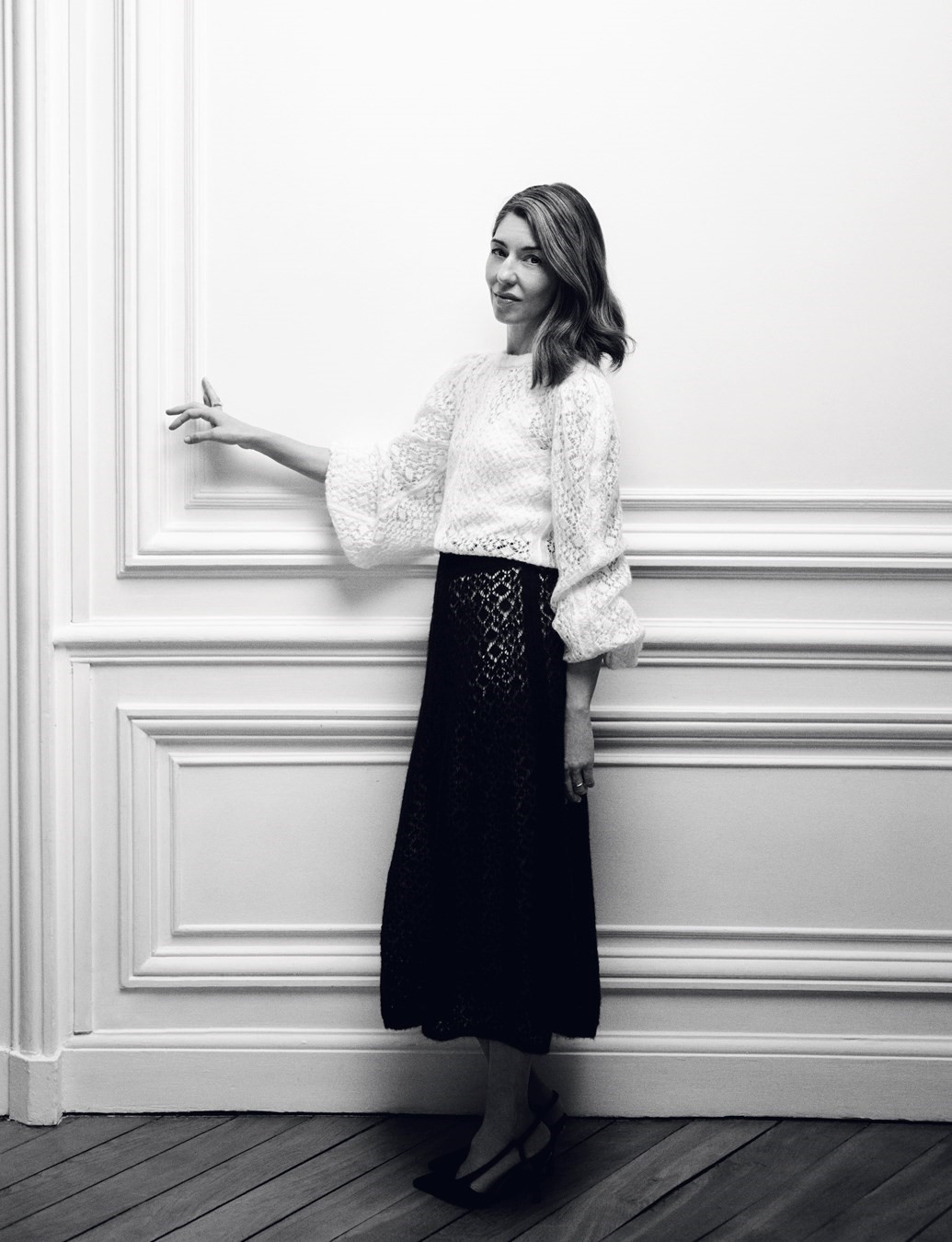
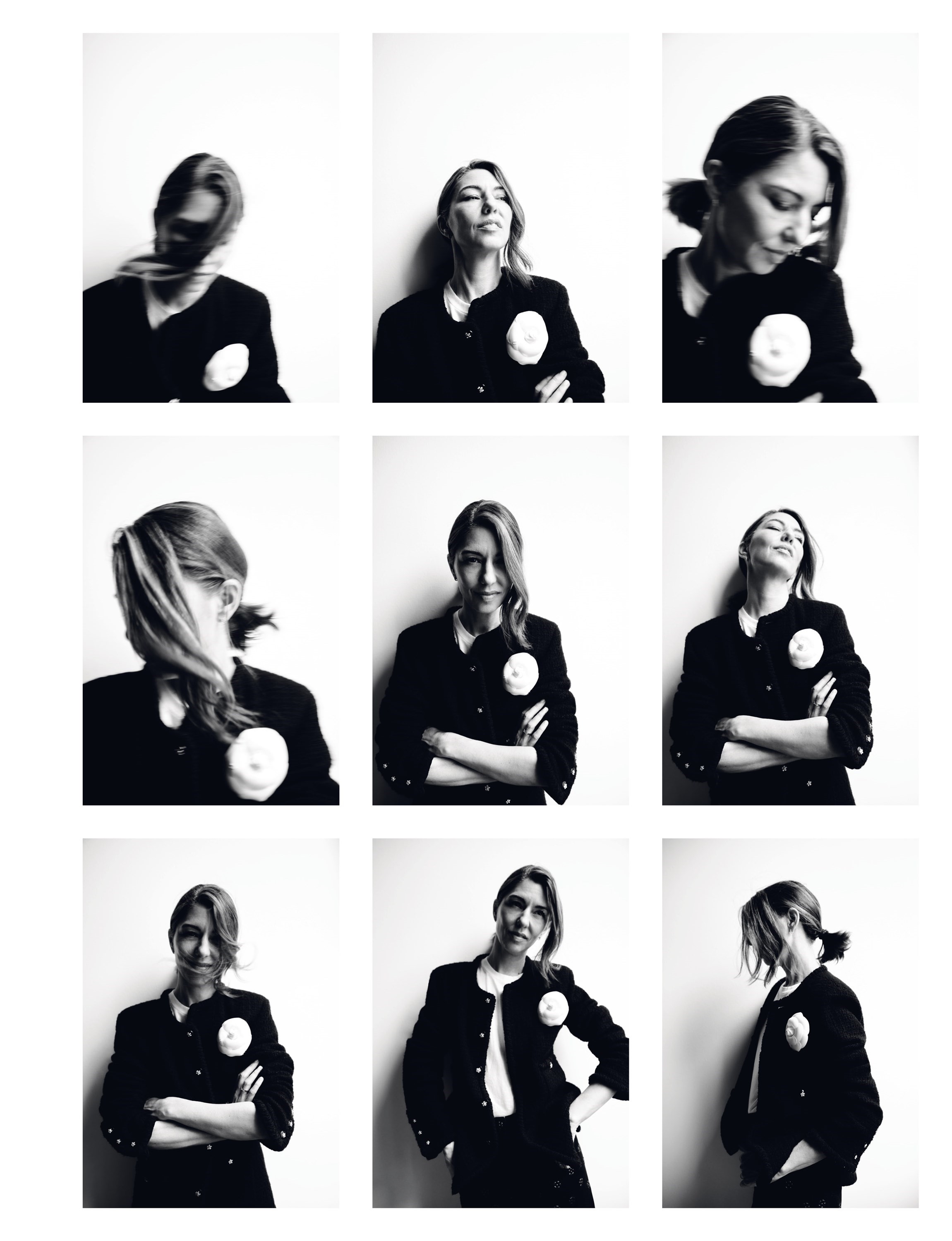
CS: Usually the costume inspires the character or sometimes even a whole series. But I’ll collect things and not be sure what I’m going to use them for, just because they look interesting.
SC: And do you have a tonne of wigs too?
CS: Oh, tonnes of wigs.
SC: I love those weird art patron ladies you did, really tanned and glamorous. How did you get into doing the grotesque pieces?
CS: I had done a series in the mid-Eighties based on fairy tales. That’s when I started using fake prosthetics, fake tits and asses. And then I moved into doing more still lifes, but with maybe just a reflection of me in a mirror or body parts showing. And there were disaster scenes of, like, vomit on a beach. And then I just got more interested in the grotesque.
SC: Where did the clowns come from?
CS: That was actually inspired by finding these men’s pyjamas at a yard sale, and somebody had altered them to look like a homemade clown suit. I loved how homemade it looked. I started googling – in the early days of computers and googling – clowns online and saw so many weird clowns just as Halloween costumes. It wasn’t like these were professional clowns renting this nice costume and fancy wig or anything. It made me wonder about the personality of who was underneath this.
SC: Who would want to be a makeshift clown?
CS: Right, and some of them look a little deranged, and you start to imagine ... Are they child molesters or are they so sad and lonely that they want little kids to laugh or something? I just started to think about these characters underneath the make-up. There was one site that was clowns for Jesus, missionary clowns that go to developing countries in just a clown outfit trying to spread the word of God. It’s really bizarre.
SC: That is the weirdest thing I’ve ever heard. It’s fun to hear what sends you off on a tangent. I guess you never know. I never know what the thing’s about until afterwards when I have to talk about it. Do you ever go into something thinking, “I want to talk about this”?
“I heard that a guy was making a movie of [The Virgin Suicides] and making it really dark and sexual. I felt, oh no, I hope he doesn’t ruin this book I love. So I started working on a screenplay just to learn how to adapt a book” – Sofia Coppola
CS: No, no. I never really think about it until after I’ve made it and have some space from it. And then I go, “Oh, maybe that’s what that was about.” Some artists decide, I’m going to make a series about this colour versus that colour or maybe it’s a political or a social statement. But I find that if I’ve thought about what the image is going to look like, I feel like there’s no point in making it. I’m trying to create things I haven’t seen yet.
SC: When you’re taking pictures and you have this discovery of, “Oh, that’s who the person is” – that must be a fun part.
CS: Yeah, especially when I’m looking in the mirror and it’s like I don’t recognise myself. I’m like, wow, OK, I’m onto something.
SC: Do you have a big mirror set up when you’re taking pictures?
CS: Yeah, I have a mirror and then I’m shooting directly onto the computer so I can see the results right away.
SC: I love imagining you in wigs and make-up, running over to work on the computer. One of my prized possessions is your childhood photo of you dressed up like an old lady with a grey wig. It makes me so happy. We’re all trying to get back to that moment of creativity as a kid. I love that you were drawn to the weird grandma character and not the glamorous princess. I loved hearing about your dad pulling over the car so you could set up strange scenes to photograph.
CS: Did you know early on you were going to be a filmmaker?
SC: I always made movies at home, and in junior high I would make little videos to get out of doing reports. I did one on George Washington so I didn’t have to write a report. Or me and my friends would make horror movies because we had video cameras around. But I never thought I would do that for my work. Maybe because it was right in front of me – “I’m not going to do the thing my dad does.” It never dawned on me. I thought I would work in fashion, because that was the thing I liked that was outside my family’s work. I went to CalArts to study painting and was really frustrated because I couldn’t find my way with it. And then I made a short film and it felt like something that came naturally that incorporates all my interests. I like music and photography so it was a relief to find the job that combines all these things that you don’t have to be an expert at. You can just know a little bit about each thing.
But it wasn’t until I read the book of The Virgin Suicides – I really loved that book – and I heard that a guy was making a movie of it and making it really dark and sexual. I felt, oh no, I hope he doesn’t ruin this book I love. So I started working on a screenplay just to learn how to adapt a book. I got really into it and I didn’t mean to finish the script, but when I did, I’d seen it all in my head. So I met the producers and said, “If it doesn’t work out with that other guy, will you look at this?” And Roberta and Chris Hanley, these eccentric art people who had the rights, agreed to let me do it. After that, I think it’s sort of addictive. It’s fun to be with a group of people helping you make what you have in your head. There’s an excitement, an energy, because with the crazy timeframe you’re always running to the next thing, problem-solving all the time. I like not overthinking it, being more intuitive – figuring it out as you go.
CS: You really captured that teenage passion and angst so well in that movie. The combination of the boys watching the girls and the girls kind of knowing their power over the boys. And you’ve done that in so many films. In Priscilla, just that desire she has for him when she’s young and Elvis is saying, “No, we have to wait until the time is right.” The actress who played Priscilla, she looks very young.
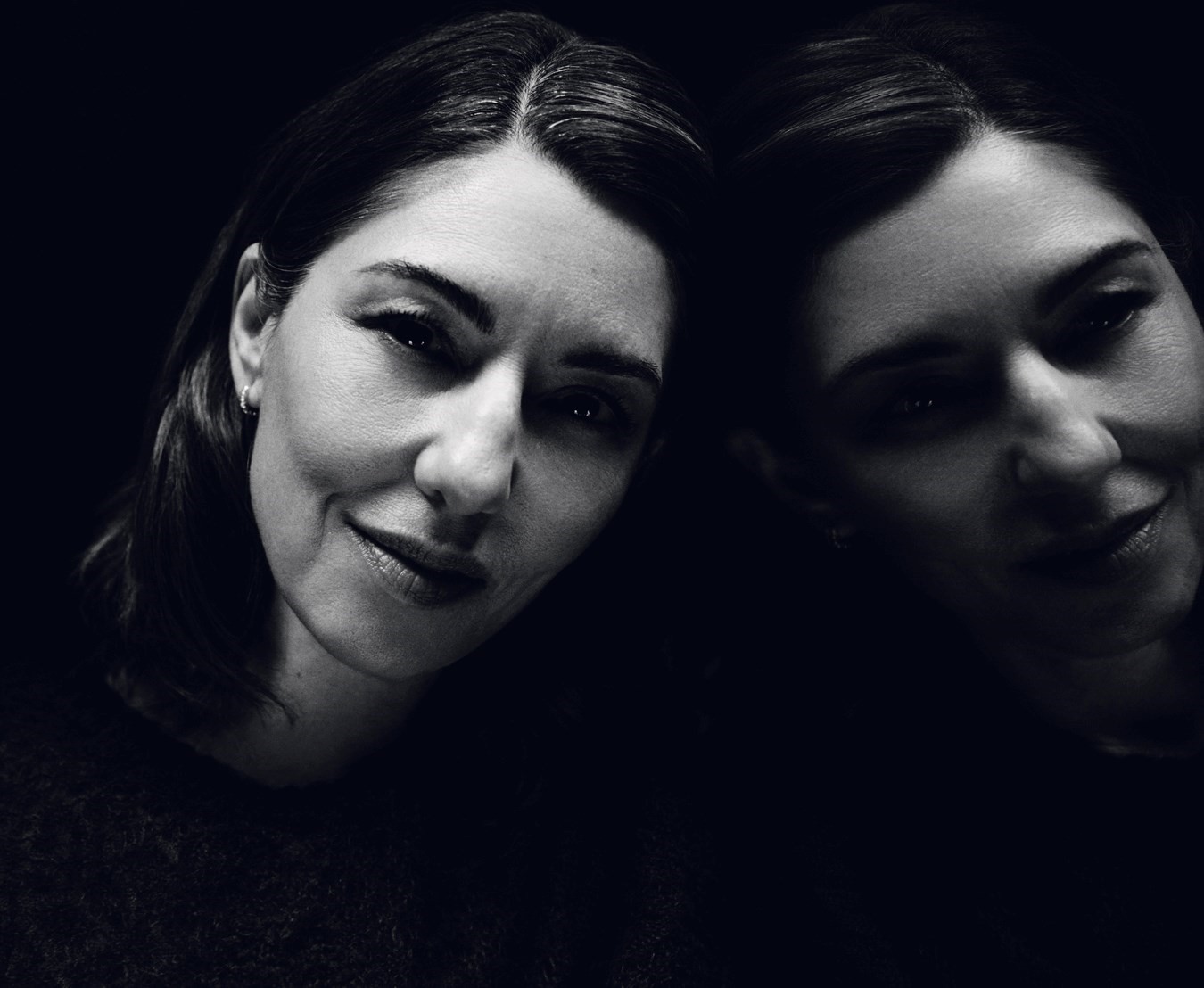
SC: Cailee Spaeny, she was 24 when we were filming, but it was really important that she looked believable as a 14-year-old, because it’s so much about her being a kid and then growing up. She had to play 14 to 28. On certain days she would have to switch back and forth between ages – be pregnant in her twenties and then change wigs, but she would switch her body language and her voice and everything. It was really impressive to watch her transform throughout the day. She was really good at capturing that feeling of being a kid. I just imagine teen crushes – if Joe Strummer had asked me to go away with him, I would have gone. Those epic crushes, especially on rock stars when you’re a teenager, how could you resist that? But then it’s hard to believe that her parents let her go. I was impressed that Priscilla actually left Elvis and got out, because I think it must have been hard for women of that generation, if you don’t have money of your own and you’re with someone powerful, to be able to leave. That was really striking to me – how did this woman who was Mrs Elvis her whole life have the strength to leave that?
CS: To stand up for herself finally.
SC: She told me that during that period when he was off on tour and not so in touch with his feelings, let’s say, she was trying to have her own friends and have real conversations. It was probably the first time there was a two-way conversation, she wasn’t just being an audience for him. She started to find her interests and she was dancing and part of a community of other dancers, finally part of something that wasn’t all about him. She said she didn’t even know her taste because her taste had always been his taste.
CS: Was there anything Priscilla was hesitant to have you film?
SC: There’s a lot of mentions of pills in her book. So with the script she said, maybe that’s too much. I didn’t want her to feel that was being exploited, that’s not what the story is about. But it definitely was an element – it’s Elvis. But she was cautious that it not feel too much about that. And people are so opinionated about how young she was. I think people were judgmental of her parents – who would let their kid go live at Graceland? But I could feel how complicated it was. They weren’t like those Hollywood parents that push their kids on a star. They were protective – there was a scene where they checked in on her. But I was trying to be kind of claustrophobic in this tunnel vision of just her relationship [with Elvis], the two of them. There was a funny story about her parents coming to visit and she was pretending to live in the guest room, and then she showed them Elvis’s room and her shoes were on the floor. So she kicked them under the bed before her parents could notice. You can relate to that mischievousness of being a teenager.
CS: Well now I want to read her book too.
SC: It’s pretty juicy. I love all those details. The stories about her taking a sleeping pill and being asleep for three days, all those details were from there. It seems so hard to believe but she said at that time doctors prescribed these things, so they thought they were fine. And then I loved imagining her going to Vegas and Elvis taking her shopping, she’s getting her hair done, and then having to go back to school in Germany. Who could go back to regular life after that? Back to winter in Germany?
So you’re using digital now – when did you switch?
CS: In 2007. I shot something for Balenciaga the very first time I tried using a digital camera and I’m a convert. Since I’m working alone it’s so much easier. In the past I’d have to bring things to a lab or develop the slides myself and then find out it’s all out of focus. Then I’d have to redo the make-up, redo everything. What about you? Do you shoot digitally now too?
SC: Priscilla was, but before that it was always on film. I love to shoot on film if we can, especially with period movies. I feel like film has a softness that brings you into another era. But I was so happy with the way Philippe [Le Sourd], the DP, made it look. If it’s done well, digital allows us to work a lot faster – we only had 29 or 30 days. We were trying to fit a lot of her life into a short shoot. So I was really happy with it, I’m just a little sentimental about film.
“When I was a little girl on Apocalypse [Now] the costume designer would make clothes for my teddy bear. Set was a magical place. My early memories of it were like being at a circus or something” – Sofia Coppola
CS: I can understand. I loved being in the darkroom when I’d print my black and white stuff in the early days, it’s like magic.
SC: Do you take pictures in your regular life?
CS: Only with my phone, but not as much as other people do. It has to be a really special thing for me to do that ... When I was growing up, my father always had cameras with him on vacations or whatever, and it was almost like he didn’t experience where we were or what we were doing because he was always looking at it through the camera.
SC: Yeah, I do feel like that’s a way to remove yourself. Or protect yourself.
CS: That’s true. There have been times I’ve been to, I don’t know, a wedding that I didn’t really want to go to and I would take pictures as a way to have a more entertaining time.
SC: I’ve done that too. Or when it’s a weird situation I’ve started documenting it as a way to be, like, is this really happening? But it sounds like the directing experience was different for you. Are you still interested in it?
CS: It wasn’t a bummer. It was just so hard. But I would like to do it again because I learnt so much. I just wasn’t expecting how intense it was going to be, I was a little overwhelmed.
SC: I guess I grew up seeing it all the time, but it’s such an unusual situation that, if you hadn’t seen that, it’s hard to know how it all works.
CS: Did you often go to set growing up with your father?
SC: Yeah. I loved to go to set, it was fun to visit all the departments. When I was a little girl on Apocalypse [Now] the costume designer would make clothes for my teddy bear. Set was a magical place. My early memories of it were like being at a circus or something. My dad would take us on location, we would end up living in all these places, in Tulsa, Oklahoma, or wherever, and I went to lots of different schools. It was hard to always be the new kid, but I feel lucky that I can be in different situations because I’m adaptable from having all these different experiences. I spent as much time after school hanging out on the set as I could. My dad always liked having the kids around, it was a family atmosphere. It was always welcoming.
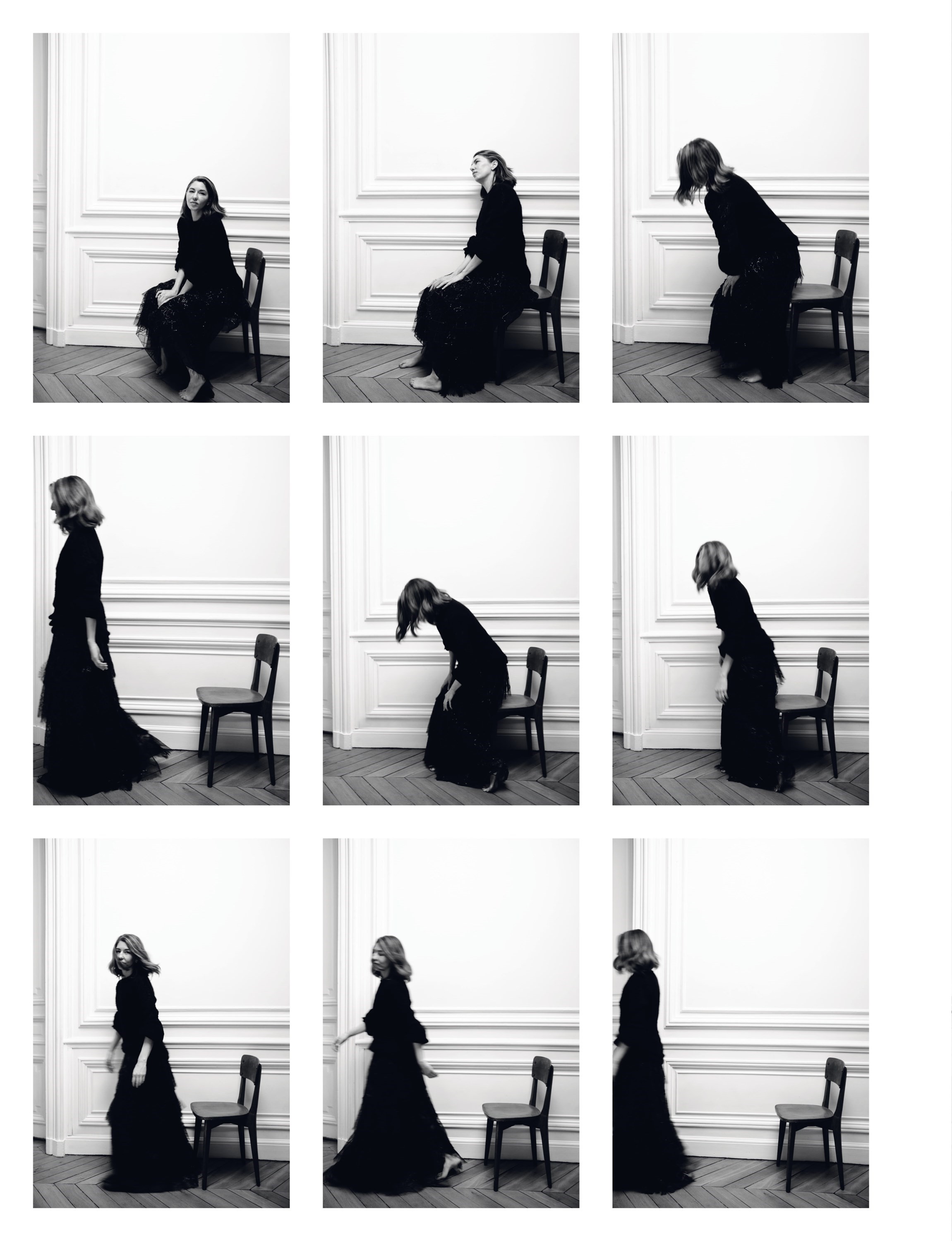
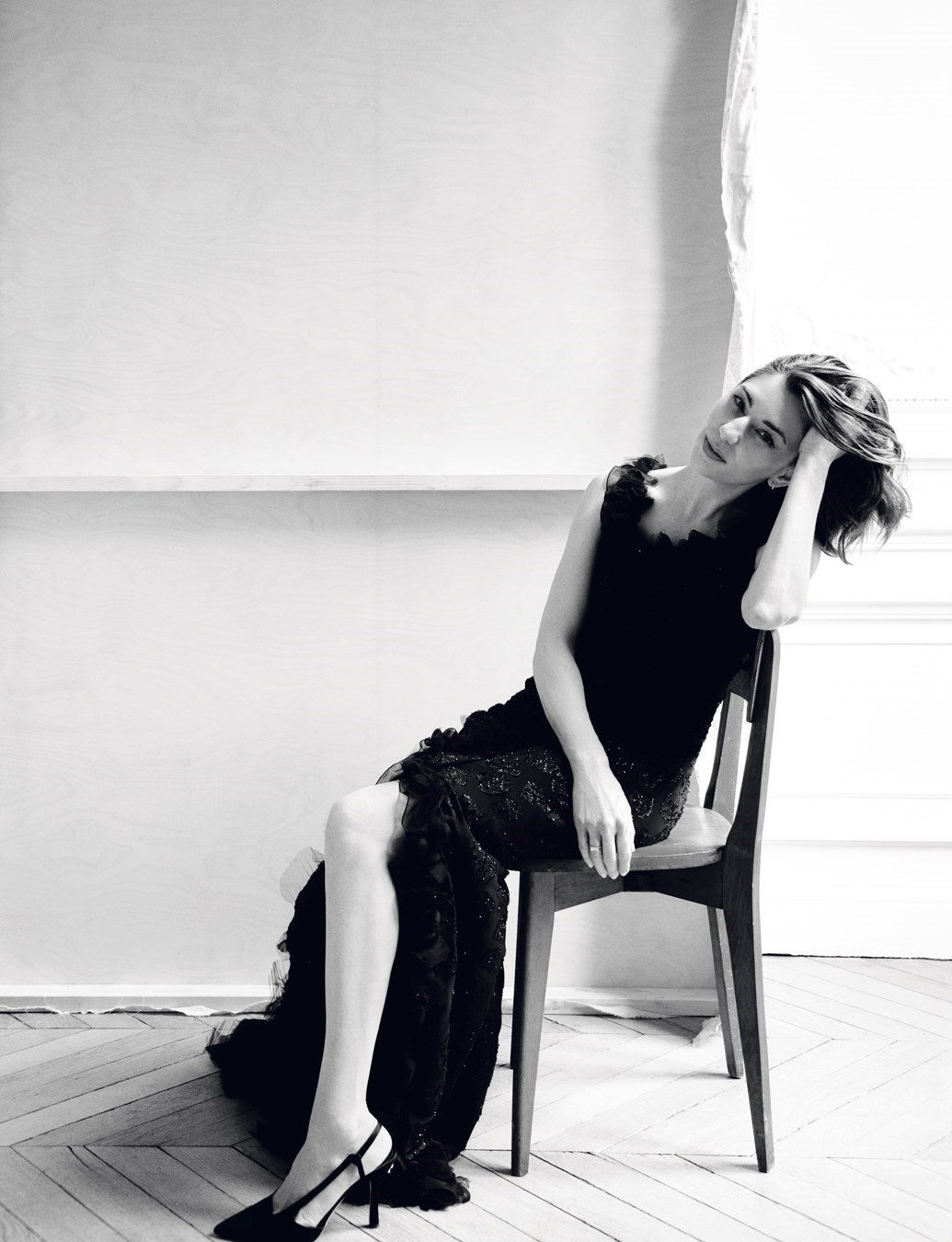
CS: Did he give you advice when you started out?
SC: Yeah. It was funny, on my first movie he said, “Make sure to wear comfortable shoes and sit down as much as you can because you’re on your feet all the time.” Very practical advice. “And speak up.” But I learnt so much just from being around him and him always talking about film because he’s still so excited about it. It’s just the most interesting medium to him. I keep what he says in mind but do it my way. You don’t realise what you’re taking in, but when I’m on set it’s familiar because I spent so much time there as a kid. Did you go to art school?
CS: No, I went to just regular state college. They had an art department but it wasn’t very good, because they were competitive with me and my friends. We started this alternative gallery in Buffalo [New York state] and we were inviting artists from the city that we had read about in magazines. They’d come and do a show or give a talk or performance. But the school would take down our posters – “Vito Acconci is coming to show”. They were jealous of what we were doing. My real education was this group of friends that started this gallery.
SC: Did you show work at that gallery in Buffalo?
CS: I did show some of my earliest work there. I had been putting on make-up and turning into characters for fun, I never thought to document it. And my boyfriend at the time said, “This is what you should be taking pictures of, what you’re doing here in your bedroom.” So that’s kind of when I started.
SC: Did you ever want to be an actress?
CS: No, I never thought about being an actress. I was too shy. To me, it wasn’t about acting. It was more using my face as a canvas and what I could do to alter it. I wanted to try on all kinds of personalities, which is why I don’t really think of them as self-portraits, because I feel like I’m hiding, I’m disappearing in the character. I’m not revealing anything.
SC: I like that you see yourself as the canvas you’re creating. You look like you get possessed. Do you ever get stuck and is there something that helps you get unstuck?
CS: I definitely get stuck, usually before I’ve even started. How to start, where to start? Going in my studio, putting on wigs and playing around is the best way to start. Sometimes I don’t have a goal. And that’s fun because you can be more playful. I guess that’s why I want to work alone, because I can be more playful and un-self-conscious by myself.
SC: I feel like the best stuff comes out of taking the pressure off and forgetting that anyone’s going to see it. Now that I’m starting to show my movie, I’m like, oh man, now I have to show people. For so long I’m in a bubble of how to make it and I forget I actually have to show it.
CS: What part of the process do you find the most exciting?
SC: The energy of being on set and seeing it all start to come together, but that’s the most stressful too. I have a lot of great memories of the Priscilla shoot in hindsight. I usually want to be in a real location because I feel like the atmosphere seeps into what you’re doing. So it was new to work on a sound stage. We had Priscilla’s teenage bedroom in Germany right next to the Graceland living room and we would just pop back and forth. It had that movie magic.
CS: Well, good luck with it.
SC: Thank you so much for doing this.
CS: It’s been such a pleasure.
Hair: Odile Gilbert at Atelier68. Make-up: Sandrine Cano Bock at Artlist Paris using CHANEL. Set design: Christian Feltham at Bryant Artists. Digital tech: Yuji Okuda at Digitart Paris. Photographic assistants: Stuart Hendry and Nicolas Darde. Styling assistant: Precious Greham. Seamstress: Marion Robillard. Set-design assistant: Jun Ortega. Producer: Zoe Tomlinson. Local production: Farago Projects. Post-production: Frisian. Special thanks to We Folk
This story features in the Autumn/Winter 2023 issue of AnOther Magazine, which is on sale now. Order here.
